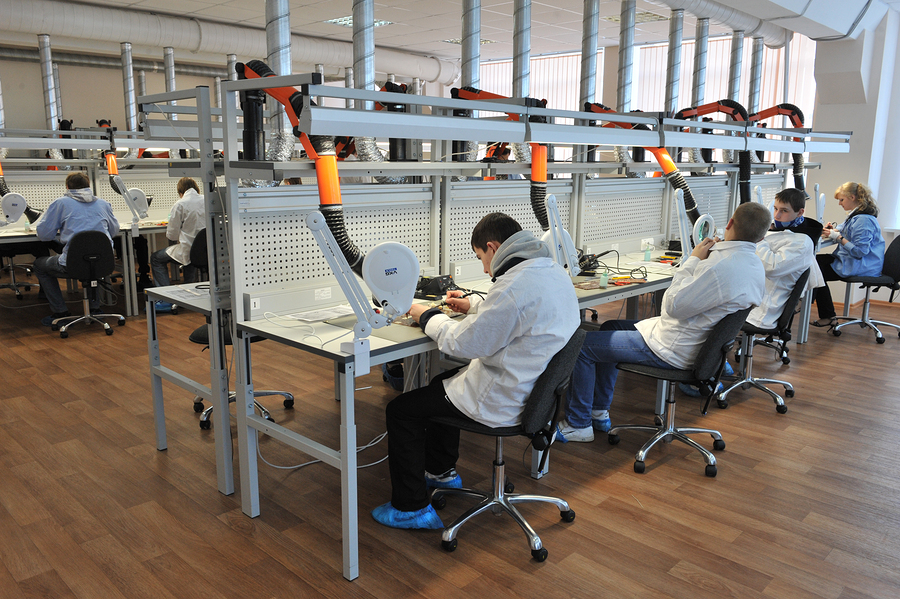In recent years, the manufacturing industry has been suffering what experts call “the middle skills gap,” meaning manufacturers fail to find potential employees with the skill sets they need. These middle skills include understanding basic shop math, how to read blueprints, as well as basic mechanical and electrical principles. Assemblers, machinists, electronic technicians, as well as tool and die makers use these skills daily. Being unable to fill positions like these keeps manufacturers from being able to expand their businesses despite growing sales. When the industry is growing at a faster rate than skilled workers are becoming available, what are manufacturers to do?
Providing training opportunities and seeking untapped resources in the hiring pool provide possible ways to close the middle skills gap and secure the future of the U.S. manufacturing industry.
Manufacturing training
Most parents sending their children to college generally believe in the “college premium.” This is the notion that four-year degrees automatically lead students to higher-than-average incomes. In reality, however, many of today’s college graduates do not earn incomes higher than their peers with less formal education. If they do, their student loan debts often keep them from experiencing the “higher-than-average-income” lifestyle.

Experts agree there are too many students being pushed into four-year college degrees. In fact, more affordable vocational training would likely provide better opportunities to lower-income workers and reduce overall income inequality in the United States. Vocational training programs provide bridges into the manufacturing sector as each level of education and training builds upon the previous. Programs also tend to be very affordable with opportunities reaching as many potential workers as possible. Many vocational schools and manufacturing employers have adopted partnerships, using their specific training methods in these programs to grow their workforces.
Untapped resources
To further fill the middle skills gap, some manufacturers are considering reaching out to potential workers they’ve not considered before. This group of untapped manufacturing resources includes immigrants, refugees, veterans, women, and members of more mature generations. Immigrants, refugees, and veterans often find their skills, certifications, and advanced degrees not acknowledged in the U.S. workforce. As a result, many are underemployed, but some manufacturing companies have found ways of utilizing the skills of those in this workforce sector.
 The rate of women employed by manufacturing industry leaders is also increasing. Because of highly automated processes, hiring managers no longer need to worry about how much their employees can lift, revealing many job options depending on other skills and abilities. A 2017 study showed 29% of women in manufacturing believe educators should recommend manufacturing for young girls and 42% of would recommend manufacturing to their own daughters.
The rate of women employed by manufacturing industry leaders is also increasing. Because of highly automated processes, hiring managers no longer need to worry about how much their employees can lift, revealing many job options depending on other skills and abilities. A 2017 study showed 29% of women in manufacturing believe educators should recommend manufacturing for young girls and 42% of would recommend manufacturing to their own daughters.
Members of older generations who are 55 and older will be retiring soon. This poses a problem as these are usually the workers with the most knowledge and experience. Given the lack of education for incoming manufacturing workers, this is the most evident symptom of the middles skills gap. Many manufacturers are asking members of the baby boom generation to stay on part-time as mentors to extend and pass on their knowledge to newcomers.
The middle skills gap is just one of the hurdles facing U.S. manufacturing industry leaders. With more vocational training and industry promotion to all potential workers, manufacturers will likely find their employee pools expanding alongside their businesses over the course of time. Most important of all is to change the Americans’ perspectives on what a manufacturing job looks like — and the potential income these professionals can earn.
